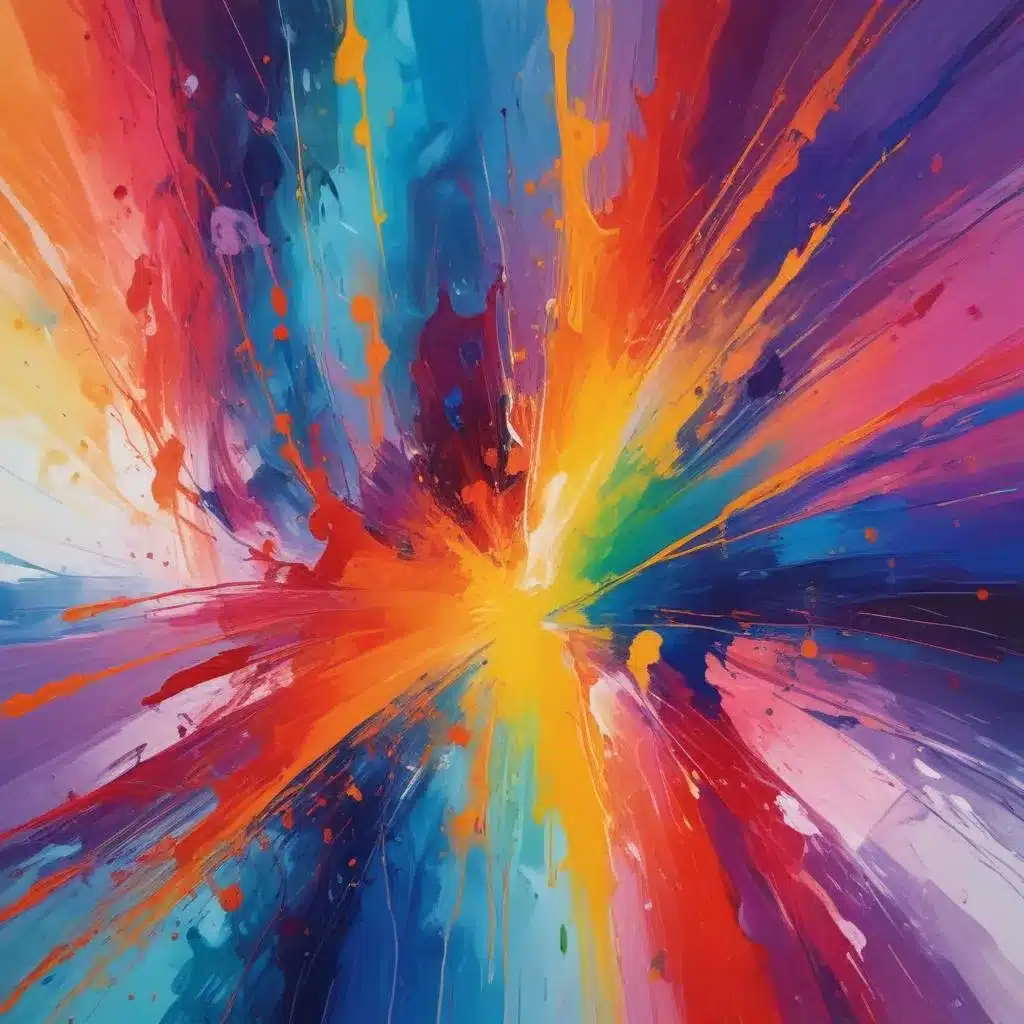
When it comes to creating captivating abstract paintings with acrylics, the strategic selection and application of colour palettes is paramount. Colour not only sets the overall mood and atmosphere of a piece but also plays a crucial role in guiding the viewer’s eye, harmonising the composition, and evoking emotive responses. As an experienced art writer and creative consultant, I’ve had the privilege of exploring the nuances of colour theory and the transformative power it holds within the realm of abstract acrylic painting.
Now, this might seem counterintuitive…
Foundations of Colour Theory
At the core of any successful abstract acrylic painting lies a strong understanding of colour theory – the scientific study of how colours interact with one another. Mastering the fundamentals of colour relationships, such as complementary, analogous, and triadic harmonies, equips artists with the knowledge to construct palettes that resonate with depth and vibrancy.
One of the foundational concepts in colour theory is the colour wheel, which categorises hues into primary (red, blue, yellow), secondary (orange, green, purple), and tertiary (red-orange, yellow-orange, yellow-green, blue-green, blue-violet, red-violet) colours. By understanding how these colours relate and interact, artists can make informed decisions about which tones to include in their acrylic abstract compositions.
Embracing the Expressive Potential of Colour
Beyond the technical aspects of colour theory, the true power of colour in abstract painting lies in its ability to evoke emotional responses and convey conceptual narratives. Colour can be used as a language to express mood, energy, and even subconscious associations within the viewer.
For instance, warm colours such as reds, oranges, and yellows can infuse a painting with a sense of vibrancy, passion, and excitement, while cool colours like blues, greens, and purples can create a more serene, contemplative, or melancholic atmosphere. By intentionally selecting and combining specific hues, artists can amplify the emotive impact of their abstract acrylic works.
Developing Cohesive Colour Palettes
One of the key challenges in creating vibrant acrylic abstracts is finding the right balance and harmony within the colour palette. A well-curated palette not only captures the artist’s creative vision but also guides the viewer’s eye through the composition, creating a cohesive and visually engaging experience.
When developing a colour palette for an abstract acrylic painting, consider the following strategies:
1. Limiting the Palette
Restricting the number of colours used can often result in a more unified and impactful composition. By focusing on a limited yet thoughtfully chosen palette, you can achieve a greater sense of harmony and rhythm within the painting.
2. Exploring Complementary Relationships
Pairing complementary colours (those opposite each other on the colour wheel, such as red and green or blue and orange) can create a dynamic tension and visual interest, adding depth and vibrancy to the abstract composition.
3. Embracing Analogous Harmonies
Analogous colours (those sitting side by side on the colour wheel, such as red, red-orange, and orange) can produce a more soothing and cohesive result, creating a serene and atmospheric quality in the abstract work.
4. Incorporating Neutrals
Judiciously incorporating neutral tones (such as black, white, greys, and earth tones) can help anchor the composition, provide a sense of balance, and allow the more vibrant hues to stand out.
5. Layering and Glazing
Experimenting with layering and glazing techniques can help blend and transition colours, creating a sense of depth, transparency, and visual interest within the abstract composition.
Practical Acrylic Painting Techniques
To bring your vibrant abstract acrylic visions to life, consider the following painting techniques:
Wet-on-Wet
The wet-on-wet (or alla prima) method involves applying fresh paint directly onto a still-wet surface, allowing the colours to intermix and blend organically on the canvas. This approach can result in soft, flowing, and atmospheric effects.
Dry Brushing
Dry brushing involves using a partially loaded brush to create textural, almost calligraphic marks on the surface. This technique can add visual interest and a sense of movement to your abstract compositions.
Scraping and Sgraffito
Techniques like scraping and sgraffito (using a tool to scratch, scrape, or draw into the paint) can help create unexpected patterns, lines, and textures that add depth and complexity to your abstract paintings.
Masking and Stencilling
Incorporating masking and stencilling techniques can allow you to achieve clean, precise edges and shapes, juxtaposing them with more organic and expressive brushwork.
Embracing Experimentation and Creative Flow
One of the joys of creating abstract acrylic paintings is the freedom to explore and embrace the unexpected. Cultivating a mindset of experimentation and allowing your creative flow to guide the process can lead to surprising and captivating results.
I find that starting with a loose, intuitive approach – without rigid preconceptions – can often yield the most compelling and emotive abstract works. Allow yourself to play, make marks, and respond to the evolving painting, letting the materials and your own intuitive sense guide the direction of the piece.
Remember, the beauty of abstract art lies in its ability to transcend literal representation and tap into the realm of emotion, imagination, and personal interpretation. By optimising your colour palettes and embracing a range of acrylic painting techniques, you can unlock the full expressive potential of your abstract creations.
As you embark on your artistic journey, I encourage you to continuously explore, experiment, and push the boundaries of what’s possible with acrylics. Embrace the unpredictable, trust your instincts, and let your paintings speak the language of colour, texture, and emotive resonance. The possibilities are endless, and the rewards of crafting vibrant, captivating abstract art are truly transformative.
If you’re inspired to dive deeper into the world of abstract acrylic painting, be sure to check out the wealth of resources available on the Pencil and Paint Muse website. From detailed technique analyses to creative inspiration and practical tutorials, this platform is a treasure trove of information to support your artistic growth.
Tip: Experiment with different media to discover your unique style